A long wire carrying a steady current I lies in the plane of circular conducting loop placed at a certain distance from the wire. There will be an induced current in the loop if it is
moved parallel to the wire
roatated about an axis perpendicular to the plane of the loop passing through the centre of the loop
rotated about an axis parallel to the wire passing through the centre of the loop
moved away from the wire
The correct Answer is:C, D
To solve the problem, we need to analyze the conditions under which an induced current will occur in a circular conducting loop due to a long wire carrying a steady current.
1. Understanding the Setup:
- We have a long straight wire carrying a steady current I.
- A circular conducting loop is placed at a distance R from the wire.
2. Magnetic Field Due to the Wire:
- The magnetic field B at a distance R from a long straight wire carrying current I is given by:
B=μ0I2πR
- Here, μ0 is the permeability of free space.
3. Induced EMF and Current:
- The induced EMF E in the loop can be calculated using Faraday's law of electromagnetic induction:
E=−dΦdt
- Where Φ is the magnetic flux through the loop, given by:
Φ=B⋅A
- A is the area of the loop.
4. Analyzing Each Option:
- Option A: If the loop is moved parallel to the wire, the distance R remains constant. Therefore, the magnetic field B and the flux Φ do not change. Thus, there is no induced EMF and no induced current. (Incorrect)
- Option B: If the loop is rotated about an axis perpendicular to the plane of the loop, the area remains constant and the angle between the area vector and the magnetic field does not change. Hence, the flux Φ is constant, leading to no induced EMF and no induced current. (Incorrect)
- Option C: If the loop is rotated about an axis parallel to the wire, the angle between the area vector of the loop and the magnetic field changes. This results in a change in magnetic flux Φ, which induces an EMF and consequently an induced current in the loop. (Correct)
- Option D: If the loop is moved away from the wire, the distance R increases, leading to a decrease in the magnetic field B. This change in magnetic field results in a change in flux Φ, inducing an EMF and an induced current in the loop. (Correct)
5. Conclusion:
- The induced current in the loop occurs in options C and D. Therefore, the correct answer is that there will be an induced current in the loop if it is either rotated about an axis parallel to the wire (Option C) or moved away from the wire (Option D).
Final Answer:
The induced current in the loop will occur if it is:
- Option C: Rotated about an axis parallel to the wire.
- Option D: Moved away from the wire.
- We have a long straight wire carrying a steady current I.
- A circular conducting loop is placed at a distance R from the wire.
- The magnetic field B at a distance R from a long straight wire carrying current I is given by:
B=μ0I2πR
- Here, μ0 is the permeability of free space.
- The induced EMF E in the loop can be calculated using Faraday's law of electromagnetic induction:
E=−dΦdt
- Where Φ is the magnetic flux through the loop, given by:
Φ=B⋅A
- A is the area of the loop.
- Option A: If the loop is moved parallel to the wire, the distance R remains constant. Therefore, the magnetic field B and the flux Φ do not change. Thus, there is no induced EMF and no induced current. (Incorrect)
- Option B: If the loop is rotated about an axis perpendicular to the plane of the loop, the area remains constant and the angle between the area vector and the magnetic field does not change. Hence, the flux Φ is constant, leading to no induced EMF and no induced current. (Incorrect)
- Option C: If the loop is rotated about an axis parallel to the wire, the angle between the area vector of the loop and the magnetic field changes. This results in a change in magnetic flux Φ, which induces an EMF and consequently an induced current in the loop. (Correct)
- Option D: If the loop is moved away from the wire, the distance R increases, leading to a decrease in the magnetic field B. This change in magnetic field results in a change in flux Φ, inducing an EMF and an induced current in the loop. (Correct)
- The induced current in the loop occurs in options C and D. Therefore, the correct answer is that there will be an induced current in the loop if it is either rotated about an axis parallel to the wire (Option C) or moved away from the wire (Option D).
The induced current in the loop will occur if it is:
- Option C: Rotated about an axis parallel to the wire.
- Option D: Moved away from the wire.
Similar Questions
Figure shows a long straight wire carrying current I and a square conducting wire loop of side l, at a distance 'a' from current wire. Both the current wire and loop are in the plane of paper. Find the flux of magnetic filed of current wire, passing through the loop.
 View Solution
View SolutionA wire loop carrying current I is placed in the x-y plane as shown. Magnetic induction at P is
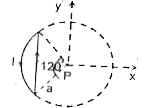 View Solution
View SolutionFigure shows a long straight wire carrying current , and a square conducting wire loop of side i, at a distance 'a' from current wire. Both the current wire and loop arc in the plane of paper. Find the flux of magnetic field of current wire, passing through the loop.
View SolutionA long straight current carrying wire passes normally through the centre of circular loop. If the current through the wire increases, will there be an induced emf in the loop ? Justify.
View SolutionAn electron moves along the line AB with constant velocity V which lies in the same plane as a circular loop of conducting wire , as shown in the figure . What will be the direction of current induced in the loop ?
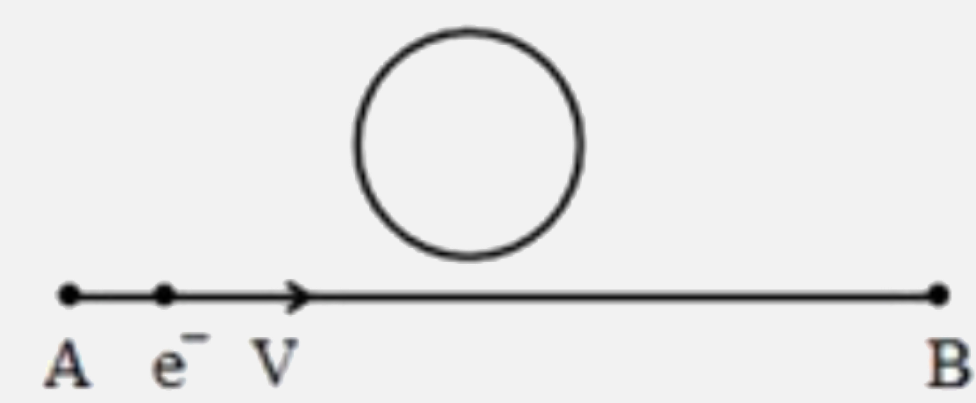 View Solution
View SolutionTwo different wire loops are concentric and lie in the same plane. The current in the outer loop is clockwise and increasing with time. The induced current in the inner loop then is
View SolutionA positive charge q moves along the line AB, which lies in the same plane as a circular loop of conducing wire as shown in the figure. The direction of current induced in the loop is
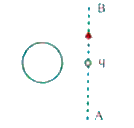 View Solution
View SolutionNear a circular loop of conducing wires as shown, an electron moves along a straight line. The direction of induced current if any, in the loop is
 View Solution
View SolutionAn infinitely long current carrying wire and a small current carrying loop are in the plane of the paper as shown. The radius of the loop is a and distance of its centre from the wire is d (d>>a). If the loop applies a force F on the wire then :
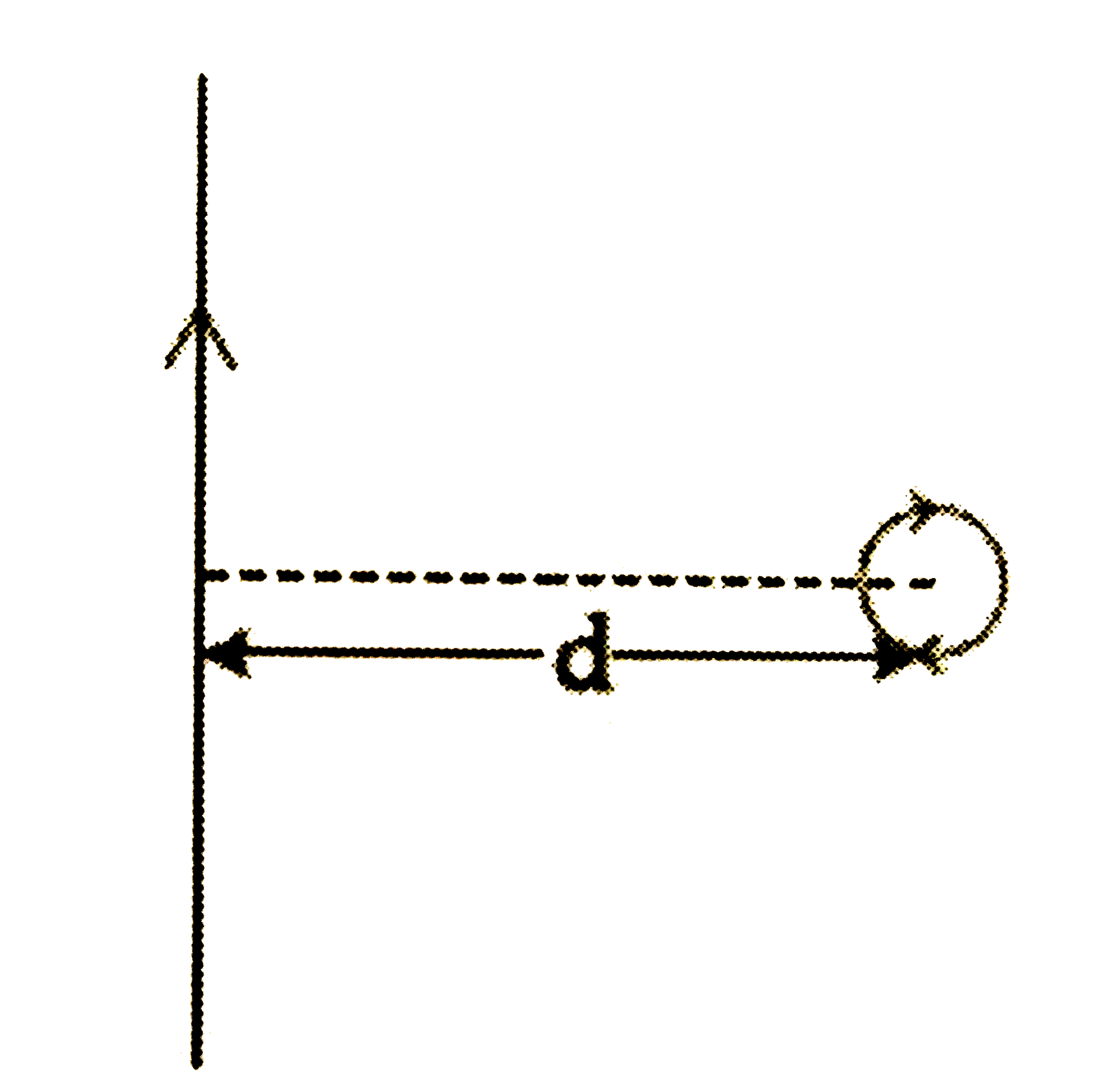 View Solution
View SolutionA square loop, carrying a steady current I, is placed in a horizontal plane near a long straight conductor carrying a steady current I1 at a distance d from the donductor as shown in figure. The loop will experience
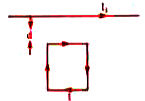 View Solution
View Solution

